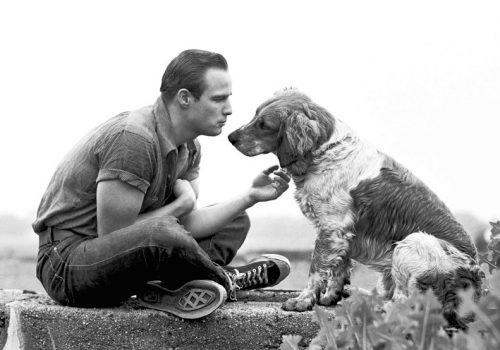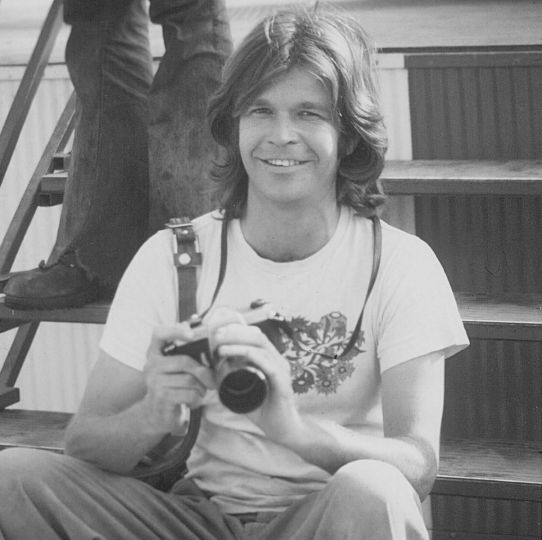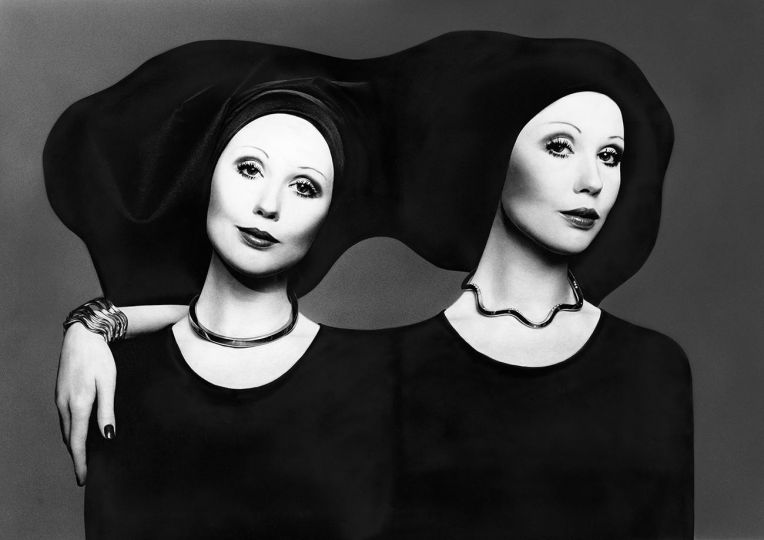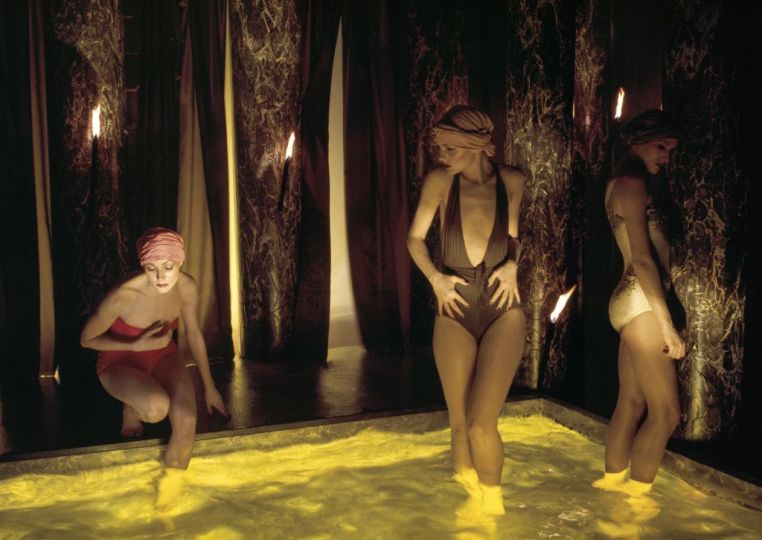American photographer and writer Art Shay died in Deerfield, Illinois (USA) on April 28, 2018. The Eye of Photography pays tribute to a man who took photos of the most prominent events of the 20th century and of many of the century’s most important people.
“You are a naughty man!” responded an amused, flirtatious and nude Simone de Beauvoir (1908-1986) to Art Shay, who had sneaked from behind the open door and shot a whole strip of her nudes, while she groomed herself in the bathroom. And, instead of slapping him she stroked him, with a cryptic compliment for the intrusion, and for obliterating prudence. In 1952, she had arrived in Chicago on a book tour for her magnum opus, The Second Sex.
Beauvoir, at the time, was having an affair with Nelson Algren (1909-1981), the National Book Award winner in 1950 for The Man with the Golden Arm, who, it so happens, was roughing it on Wabansia Avenue in Chicago, in $10 a month apartment, with no bathroom. When the time came for her to wash up, Algren requested his long-time friend, Shay, to chaperone the lady to a friend’s bathroom – where the little adventure unfolded!
Shay’s subject that summer, Beauvoir, was already a renowned thinker by the mid 20th century – an existentialist philosopher, who was Jean Paul-Sartre’s mistress, never flinched when he released the shutter several times, capturing, arguably, the most wanted photograph of the century. It revealed two masters that day – Beauvoir, the delectable philosopher, who flaunted her modernist sensibilities and sexual liberty. Second, Shay, who pounced on the moment like a feral cat.
Our stocky photojournalist, at a youthful 96, was a consummate opportunist, perpetually on the hunt, who was once the San Francisco’s bureau chief for LIFE magazine. His archivist and estate manager, Erica DeGlopper claimed, “His genius is always on assignment.” He was a World War II veteran of over 50 bomber missions over Germany. He also was the deserved recipient of the LUCIE Award from the eponymous Foundation, in New York, for his contribution to the photographic arts. The other winners had been Henri Cartier-Bresson, Robert Evans, Sebastiao Salgado, Nick Ut and Arnold Newman.
Shay is singular, because, he also was an accomplished writer, unlike others, with scores of titles to his credit. He was a unique writer-photographer, who pursued Dostoevskian eloquence in the evocation of the human condition with his camera, and when writing, he visualized like Vittorio Storaro or Gordon Willis (Oscar-winning cinematographers) in the unfolding scenes. Capturing the irony in our condition is the mark of not only a great writer, but a prescient photographer as well.
There is a binary heterotelic symbiosis between great photography and writing, because, both need visualizing – and, I have always enjoyed this crossover faculty in artists. I also resort to such devices: writing, becoming the catalyst for acute aesthetic discernment in visualizing – as in extempore photography, a pursuit, of not just the gratuitous and the contrived, but, contextual aesthetic, proposed in my thesis this past summer: The Aesthetics of Ambiguity – a proposition that aesthetic is intrinsic to ambiguity: a fundamentally urban condition.
This brings me to my favorite street photograph by Shay, titled: Sunday Morning on Madison (also known as Dutch Masters). A photograph so astounding and aesthetically charged that it induced me to pen a short story based on the characters in the photograph. Shay found it so convincing, that he had to immediately issue a disclaimer to the editor-publisher that my short, actually, was fiction, and the real story is that he and Algren, had been driving around Halsted and Madison streets, in 1949, on a Sunday morning looking for stories, when Shay was suddenly afforded the opportunity at the stop light, to get this photograph through the car window at the corner of Madison Street. In the discernment of many curating critics, this was, arguably, the greatest street photograph ever taken. It’s in the permanent photographic collection of The Art Institute of Chicago, and other noted museums. He gave me a signed print in 2007!
In person, Art Shay was primarily a listener, but a sardonic storyteller – never missing an opportunity for a shutout. On the evening of June 23, 2007, I had invited him, and his wife Florence, a recognized intellectual in her own right (advising state governors, a rock star, and famous playwrights like David Mamet on rare books), the Chicago Tribune editor, and other friends over for dinner. During that raucous dinner, we each set about extolling our misadventures in life, trying to one-up each other over whose survival tale was dangerously glamorous, a close call.
Shay, sat still, like a bobcat in a pen full of mice frolicking over their exploits, and listened in benign amusement and restraint. Then, when we all had exhausted our ammunition, he lapped us up. In a mockingly diffident tone, he told us about his exploit. During a supply flight in 1947, on a B-17 Flying Fortress, they had engine trouble and were forced to crash-land on Newfoundland. The plane skidded right to the brink of a thousand-foot cliff. With our eyes bulging and mouths open, we drank in the details. Then, with a laconic smile, he claimed, that our ‘orifices’ had actually reminded him of the displaced toilet seat from the wreckage, through which he had taken a shot of the plane’s entrails – and “the crew had survived our excruciating banality,” he added, with an expansive leer. Silence, then a burst of applause.
He was humble and subtle, yet, direct and provocative. In the summer of 2009, Shay and I were debating the function and obligations of a film critic. I posited that it was obligatory for a film critic to raise the bar of the audiences, by being didactic, a teacher proffering insights, and not just being a “Thumbs-up” cheerleader for everything that was released, implicating Roger Ebert, the film critic, indirectly – who, unbeknownst to me, was Shay’s dear friend. My proposition was based on my own convictions and was corroborated in the essays by literary critics like Harold Bloom, Erich Auerbach, and Northrop Frye. Shay promptly forwarded my “flogging” of Ebert to his friend. Much later, I was able to decipher what Shay had done – he had tacitly agreed with me, but, instead of offending his friend, he simply had his own criticism be delivered in my words, by forwarding my email. Ebert responded, “Ouch… this is my toughest critic, yet, who’s he?”
Shay is the fountain of evocation. His 25,000 negatives are the triggers for the American panorama. Photographs, like the ones of Marlon Brando and Cassius Clay, that reveal chrysalises, of a maturing method thespian and a fighting machine, on the cusp of immortality. In the late 40s, he photographed the nation rediscovering itself. In the 50s, his lens saw the nation uncover itself: sexual revolution. In the 60s he experienced Dr. King’s power of words and the Flower-Power against the war. In the 70s, Carter’s cowering to the Iranians and powerless people in gas lines. The 80s saw the deaths of his old friends, Algren and Beauvoir, and the powering of the conservatives, on Reagan’s coattails. And, in the 90s, he saw the film go obsolete at digital speed. Historian, Garry Wills was right, he did indeed record the decades!
In an essay titled An important recorder of history!, historian Garry Wills wrote: “At a time when many a photographer’s reliance on equipment and software is incessant and endemic, Art Shay maintains his curmudgeonly simplicity, as if saying “fuck you!” by toting around a rangefinder Leica, to render his masterpieces. No photographer, dead or living, had ventured this far and wide to capture the murkiness of life, it’s wretchedness, as well as its glory and pretense. While others pursued mirages of clarity and illusions of still life, Shay chose the Dostoevskian gutter to illustrate life, its real fiber. Accompanying him occasionally was Nelson Algren, hunting for Faulknerian tales of survival. I want to celebrate Shay, my friend, and mentor, for his searing wit and visual brilliance, that feline agility given a chance, his reticence that speaks volumes, and his cynicism, that sees through banality like a Great White spots a meal in the surf.”
Shay’s exhibits are “receding” experiences, I traversed back in time in his photographs, losing myself in that melancholic sepia, over the dissolved decades and most people I wish I had met. Photographs that linger well past the exhibits. However, this celebration is about the man – how his personality, his generosity, sardonic wit, and perspective had not only shaped his life, but his oeuvre as well – and how it also gave many a nascent writer-and-photographer insight into the oracular truths on being organic in creativity and seizing the moment. He also possessed the relentless spirit of encouragement!
Here’s an example of Shay’s encouragement, in bawdy and chiding wit in 2009: “Peddada’s brilliant look at luxury is an absolute Kama Sutra of how we have fucked with luxury and it has fucked us, that is, fucking us. He reminds me of what I imprecisely remember of Milton’s Aereopagitica. Not it’s carping at Catholics and its God-fearing blather, but of its prescience about the world we inherited, caparisoned with luxuries, and fucked up. Despite shaking our invincible locks and emulating a New World eagle, pointing our clear, undazzled gaze at the full mid-day beam of a sunny world we never made. And have just squandered. I think the (suddenly controversial) Milton would have been amazed at the wisdom of a small-town Indian’s undazzled gaze at our society. His sons, Raju and Atman are lucky…”
Sometimes, when I meander in wonder, in the infinite alley of concatenation, I’m astonished. As a pubescent boy, I had seen The Second Sex by Beauvoir on my dad’s shelf – it was an Aha! Moment, I remember being proud of him, for being cool, modern. Several decades elapse, and now, I possess that iconic Beauvoir nude by Shay. Coincidence, serendipity? I don’t know, but, it’s one very long inexplicable thread, connecting my father, boyhood and my ‘middle-hood’ – inscrutable concatenation! More than anything I am grateful, for brushing up against this living personification of creativity and history – who once had personally consulted with Ernest Hemingway during the war. Was a buddy to Nelson Algren, and his transcontinental love: Simone de Beauvoir, who then was linked to Jean Paul-Sartre, who in turn, was pals with Albert Camus and James Joyce. See the literary knots, the DNA of friendships? As if this was not enough, his cables had also pulled up the curtain on Marcel Marceau, in Chicago. Yet, despite his sphere of stars, he was down to earth, and real.
One cannot help but agree with this notion, that if a man could risk fifty plus bombing missions over Germany in World War II, survived a plane crash on a desolate ice field, yet, retain his humor, and top that in a fracas with a vice presidential candidate, he would be depleted of audacity and gumption. Not a chance! He had the chutzpah to risk getting censured by a French intellectual icon, no less, for sneaking behind to capture her derriere. Was it for himself or posterity is a matter of deep conjecture. And, wouldn’t you know, promptly after this little escapade, Hugh Hefner was his new best friend. He lived on the edge, and so it goes. For me, connecting with him was being in touch with it all. Thank you, Art, for being our photographic sage.
Raju Peddada
Raju Peddada (born in India) is a photographer, design provocateur, an originalist in design contemplation, who draws inspiration not from other designers, but from nature, history, and literature. He is the author of four small books.
















